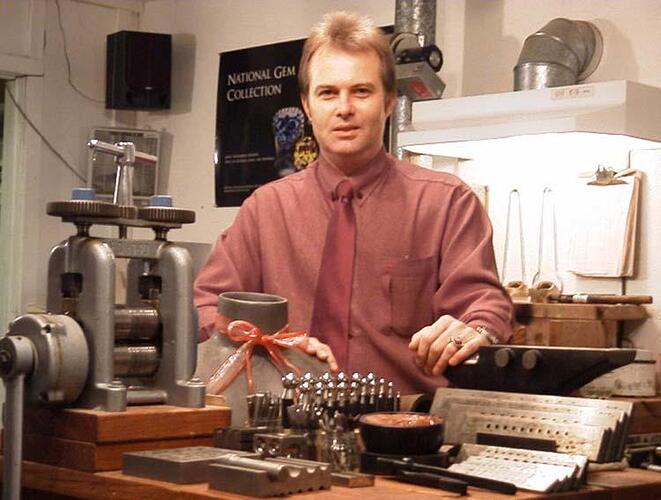I have only one caveat regarding heating stones by any means to press
them into wax models…
Don’t do it if you cannot afford to replace the stone.
This is a true story, and only one of several that I have heard of:
A local tradeshop, working for a well known retail chain, was given a
2 carat marquise diamond and requested to make a wax model. This
bench jeweler had had almost 20 years experience at this point. He
carved the model to the customers’ specifications, and then began to
do the final fitting for the diamond. He warmed the stone, using an
alcohol lamp. Got the seat fitted up perfectly. Reheated the stone,
so as to “wiggle” it a tiny bit in the seat, and allow for
shrinkage…
At this point the stone flew out of the tweezers… it had broken in
half! As most of you independants know, we are responsible for every
item we accept to work on - no matter what happens. He took the stone
to a lab in San Francisco, hoping to find that it was not really a
diamond. It was. He was told that when larger diamonds are cut, they
sometimes reach incredible temperatures from the friction of the lap.
This induces stress inside the stone. If the stress is not relieved,
and the stone is otherwise flawed or has an invisible cleavage
problem, you are working with a time bomb. If it hadn’t broken when
it did, it could have broken in the setting, or even in the
ultrasonic… but then again it might not…
Needless to say the retail store was not sympathetic. He wound up
taking out a second mortgage on his home to pay for a replacement. I
decided never to take that risk. I have a pretty extensive supply of
synthetic corundums, and cubic zircons lying around the shop. I can
usually find one the same size and shape as the stone I’m working
with. Cost next to nothing. I’m sure there are hundreds of other
horror stories out there… and the odds of them happening to you
are slim to none. But, I have had a lifelong battle with “Murphy” (of
Murphy’s Law) and if I can cheat him or slow him down a little, I
will. He wins enough as it is! Handle high priced, rare, or delicate
stones by using something else in their place…
Murphy may still win in the end. You may break it setting, drop a
tool on it, or have it slip out of your fingers while buffing and
crash into the hood, to name a few other fairly rare occurences. Why
take an additional chance?
Brian P. Marshall
Stockton Jewelry Arts School
